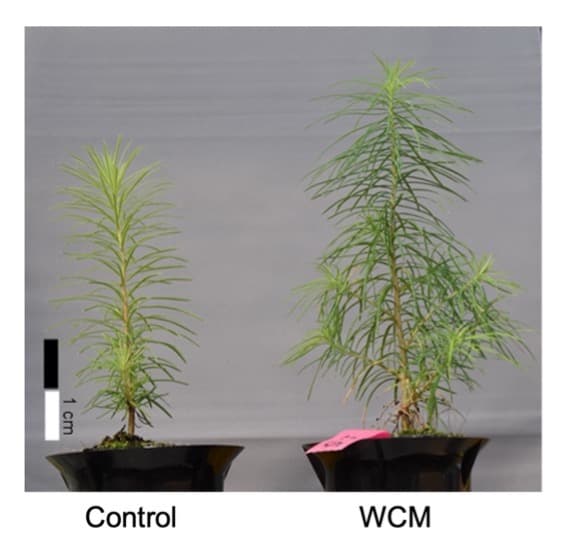In order to grow big and strong, plants require the red and blue light that are part of the visible “white” light produced by the sun. Scientists have now developed a plant-boosting film, that converts the sun’s UV light into more red light.
First of all, don’t plants need ultraviolet light? While some studies suggest that exposure to it may boost the flavors and scents of certain plants, the overall consensus is that UV light is not necessary for plant growth. In fact, as is the case with humans and other animals, excessive exposure can actually harm plants.
That’s where the WCM (wavelength converting material) film comes in.
Developed by a team at Japan’s Hokkaido University, it consists of commercially available transparent plastic sheeting that has been coated with a thin layer of a rare-earth metal known as europium. When positioned over plants growing in direct sunlight, the material allows all of the visible light to pass through, but it additionally alters the wavelength of incoming ultraviolet light, converting it into visible red light.
In field tests, groups of Swiss chard plants and Japanese larch seedlings were grown both with and without the WCM film – in other words, the material was used on some groups, but not on others.
During the summer months, when the days were longer and the sunlight was stronger, the film made little difference to the chard plants. In the winter, however, plants grown under the film exhibited 1.2 times greater plant height and 1.4 times greater biomass after a 63-day period.
Additionally, larch seedlings grown under the film had a higher relative growth rate throughout the initial four months of growth. This resulted in them having a stem diameter 1.2 times larger than that of the control group, and a total biomass that was 1.4 times greater. Notably, the accelerated growth allowed the seedlings to reach the standard size for forest planting within one year, as opposed to the usual two years.

Sunao Shoji et al. Scientific Reports. October 26, 2022
It is hoped that among other applications, the technology could one day be used for increased food production in regions with cold climates, where the days are relatively short and the sunlight is relatively weak.
“By using a coating of wavelength changing material, we were able to successfully create a transparent film and demonstrate its ability to accelerate plant growth,” said lead author Sunao Shoji. “By rationally designing the light-emitting ion, we can freely control the color of emitted light to be other colors like green or yellow, so we expect to be able to create wavelength converting films that are optimized for different plant types.”
A paper on the research was published this week in the journal Scientific Reports. Readers may also be interested in a thin film recently developed at New York University, which converts ultraviolet and blue light into near-infrared light that can be used by solar cells to produce electricity.
Source: Hokkaido University
Source of Article